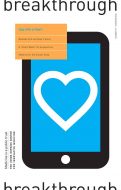
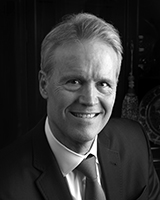
David B. Hellmann,
M.D., M.A.C.P.
You may have noticed that we have a tech theme going with this issue of Breakthrough. It’s not technology for its own sake; we’re not impressed with bells and whistles just because they can do cool things. What we are interested in is helping people – our patients and the people in our community – to live better lives.
One tiny example of this may surprise you: it’s not anything new or fancy, it’s the humble hearing aid. Jeremy Walston, after years of studying people as they get older, has come up with some common-sense things that the healthiest and happiest have in common (see Page 12). If you need a hearing aid, get one: because if you can’t hear what people are saying, you may start to withdraw and isolate yourself, and that hurts your brain. Connecting with others is good medicine.
That theme of caring and reaching out is what our Medicine for the Greater Good initiative is all about (see Page 20). For us here in Baltimore, the recent riots brought home how far we all have to go. In November, our Bayview Internal Medicine Residency Directors wrote in the New England Journal of Medicine that as physicians, we naturally “want to provide outstanding medical services to this vulnerable population” here in our neighborhood. But unless we also address the “intractable sense of hopelessness,” we will not truly succeed.
We continue to do our best to turn out more caring physicians and to honor our finest clinicians. You can read about the “sticking power” of our Good Doctor Initiative on Page 18, and meet one of our newest inductees in the Miller-Coulson Academy of Clinical Excellence on Page 22.
And now, what about all that new technology? Well, it’s pretty exciting stuff. One of our residents, Francoise Marvel, has developed an app to help our patients who have gone home after being hospitalized for a heart attack. Too many of these people – all over the country – end up coming back to the hospital within a month. Just about all of them have a cell phone, and Marvel believes this may be the key to keeping them healthier (see Page 7). Jiande Chen, a scientist in our Amos Food, Body, and Mind Center, has developed a smart watch for acupuncture (see Page 10). It delivers a safe, painless dose of electric current that penetrates as deeply and precisely as an acupuncture needle – but patients can use it in their own homes, right after every meal, to help their stomachs work better. The CIM celebrates innovative thinking, and this blend of Eastern medicine and cutting-edge science offers an exciting new approach that may help treat other problems, as well.
Finally, we come back to where we started, at the patient’s bedside. Handheld ultrasound (see Page 4), a pocket-sized device, lets doctors watch the patient’s heart contract, measure blood blow, check the heart valves, spot an aneurysm and even detect a gallstone. It doesn’t replace the physical exam, it just helps us do it better – so that we can help people better.
I hope you have a wonderful summer,

Aliki Perroti Professor of Medicine;
Vice Dean, Johns Hopkins Bayview Medical Center;
Chairman, Department of Medicine
Don Willett May 10th, 2016
Posted In:
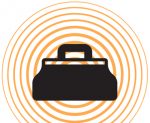
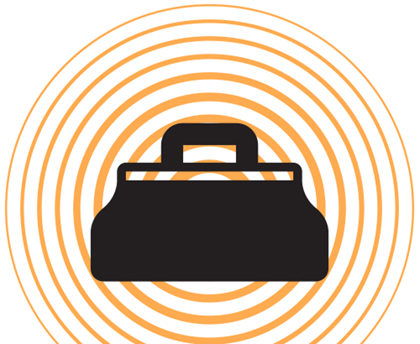 What is it about Sir William Osler, anyway? We evoke his name around here a lot, and for good reason: he was the founding Professor of Medicine at the Johns Hopkins School of Medicine. He was also a master diagnostician whose teaching at the bedside revolutionized medical education. On the faculty today are many excellent physicians who were taught by excellent physicians whose teachers learned their craft, in turn, either from Osler or one of his residents. So, his legacy here is strong, and his ghost seems to be very much with us.
What is it about Sir William Osler, anyway? We evoke his name around here a lot, and for good reason: he was the founding Professor of Medicine at the Johns Hopkins School of Medicine. He was also a master diagnostician whose teaching at the bedside revolutionized medical education. On the faculty today are many excellent physicians who were taught by excellent physicians whose teachers learned their craft, in turn, either from Osler or one of his residents. So, his legacy here is strong, and his ghost seems to be very much with us.
But it’s been nearly 130 years since the Hospital opened, and by and large, most internists and residents are still basically approaching the patient at the bedside with “no better tools than Osler used” – mainly a stethoscope, an ophthalmoscope, for looking into the eyes, an otoscope, for checking the ears, and a percussion hammer, says Vice Dean and CIM Director David Hellmann, M.D. “And that’s unfortunate, because even in Osler’s hands, these tools in a number of settings weren’t very good. There’s no reason to think the physical exam has mystical powers when it doesn’t.”
In case you ever wondered exactly what a doctor is thinking when you’re told to “Breathe in, breathe out” as the stethoscope moves around and the exam room is in otherwise dead silence, here’s some of the inside scoop from Hellmann:
“You can tell some things about how the heart is functioning in a physical exam,” he says. “You can tell if valves leak and if a person has heart failure. But the physical exam is very inaccurate in estimating ejection fraction,” in other words, how much of the contents of the left ventricle are being ejected with every beat. A low ejection fraction is often silent, yet “ejection fraction is one of the most important predictors for how someone is going to do – and treating it prolongs life.”
Have you ever wondered exactly what a doctor is thinking when you’re told to “Breathe in, breathe out” as the stethoscope moves around and the exam room is in otherwise dead silence?
Determining if someone has a low oxygen level is “perhaps more straightforward,” says Hellmann, in that “oxygen level can’t be measured by physical exam at all. And yet, it is life-threatening when low.”
Another part of the physical exam, where the doctor feels around your abdomen, can suggest when someone has ascites, or fluid in there. But not always. “I admitted a patient years ago,” recalls Hellmann. “Four doctors swore he had ascites by physical exam. The next day the ultrasound showed he was just obese.”
Hugely enlarged spleens “can be detected well on physical exam by feeling the tip of the spleen.” However, most of the time, the enlargement is not huge and “you can’t feel it. But you suspect it on percussion – tapping your finger over the belly – because the sounds you usually hear, which are tympanic (hollow-ish and resonant, like the sound of a drum) over the stomach turn to solid sounds when the air–filled stomach is crowded out by the log-solid, enlarged spleen.” However, he adds, “eating a big Mac with fries will cause the same changes in percussion! Fingers can be fooled. But ultrasound is not fooled.”
Imaging tests, of course, can show all of these things – but not immediately, right there at the bedside. The bedside physician needs to put in an order for the test, someone must wheel the patient down to Radiology, where a tech will administer the test, and then later a radiologist will read it. Sometimes this can take a day; sometimes even longer.
So, how can we improve the physical exam and ability to make a diagnosis at the bedside? WWOD? What would Osler do?
Sir William Osler might be very interested in the use of a device that fits easily into the pocket of a white coat, called handheld, or hand-carried, ultrasound.
With it, instead of just listening to your heart, doctors can actually watch it contract. Instead of simply taking your pulse, they can measure your blood flow, check your heart valves, look for narrowing or an aneurysm in major arteries – which means you’re at risk of having a stroke or heart attack – and even spot a gallstone. They can do all of this in real time, right there, in the emergency room, hospital bed, or clinic, instead of either wheeling you to Radiology or worse, making you come back for an appointment to get an image.
Handheld ultrasound is not a new idea for Hellmann; it’s one he has believed in for more than a decade. He worked with a company called SonoSite to get a portable ultrasound machine into the hands of residents, and in 2005, he and colleagues published a study in the American Journal of Medicine demonstrating that residents could indeed learn the basics of handheld ultrasound and use it successfully at the patient’s bedside.
Consider, Hellmann says, the example of the defribrillator: “They used to be big and expensive, and only used in hospitals.” No one imagined at first that such a powerful device could ever be used safely by non-medical people. But it has been, with great success. Now, in fact, the defribrillator is as visibly available as a fire extinguisher in many places where there are lots of people: hotel lobbies, airports, and big box stores such as Home Depot.
Hellmann doesn’t advocate putting handheld ultrasound in Wal-Mart, but he would like to see it become a staple of the doctor’s bag. Already, because of Hellmann, internal medicine residents at Johns Hopkins Bayview – unlike internal medicine residents anywhere else – are trained to use handheld ultrasound. Now kidney disease specialist Tariq Shafi, M.D., is leading studies to find out whether using handheld ultrasound “can make diagnosis faster, cheaper, and more convenient to patients while improving patient care.” Because “imaging is not really available at the point of care,” says Shafi, patients in hospital beds or the clinic must go where the big machines are – “even though the technology has improved and become miniaturized and is available in a hand-carried device.” He believes the use of handheld ultrasound will “complement the physical exam, not replace it. It can actually improve our diagnostic skills, as we get more information in real time about what’s happening to our patients. It can also improve our connection with the patient.”
If you have ever had medical imaging, most likely a technician performed the scan, didn’t tell you anything, and you either went home or back to the hospital room and waited for a radiologist to read the test and then tell your doctor, who told you the result. With handheld ultrasound, the doctor reads the result right by your side, and tells you about it in real time.
Some educators fear that if young doctors learn to rely on technology in making their initial diagnosis, then their clinical skills will get sloppy – that they will lose the art of the physical exam. That they will rely on the technology as a crutch – the medical equivalent of people who can’t get from Point A to Point B without Google maps or GPS. “But really,” says Shafi, “the problem is, you don’t get the all the answers you need from just a physical exam.” In his field of nephrology, for instance: “People with advanced kidney disease on dialysis are often in a state of volume overload. Water can go in,” but with the kidneys not working at all, that water has no way to come back out. “We can assess someone’s volume status with certain physical exam skills – checking for edema in the legs, or listening for lung sounds that suggest fluid overload. These tend to become really obvious when someone has severe volume overload.”
Figuring this out at the bedside is now largely subjective, Shafi says. “If we think somebody has too much fluid and the person actually is not in overload, and we remove too much fluid on dialysis, it can make the blood pressure go down,” the results can be disastrous, and can include a stroke or heart attack. On the other hand, if the patient is in volume overload and the doctor doesn’t realize it, that extra fluid can cause blood pressure to escalate and make the heart work too hard.
Handheld ultrasound can help make the call. If the probe is held to the heart, it can show how well the heart is squeezing blood. Held to the inferior vena cava, the large vein that runs through the abdomen and carries oxygen-depleted blood from the lower body back to the heart, it can show whether the blood flow is normal or not. “It’s like looking at a river,” says Shafi. “If it’s big and stretched and looks like it’s overflowing its banks, you know there’s too much fluid.” Held to the lungs, the ultrasound probe can show signs of vascular congestion. Because of hand-carried ultrasound, Shafi explains, “I’ve really changed my clinical approach.”
Some educators fear that if young doctors learn to rely on technology in making their initial diagnosis, then their clinical skills with get sloppy. That they will rely on the technology as a crutch – the medical equivalent of people who can’t get from Point A to Point B without Google maps or GPS.
The device does require training; a doctor can’t just point and shoot and have a machine come up with a diagnosis. If, say, you are a doctor and you use the device, did you read it correctly? Did you miss something? Or, at the other end of the spectrum, did you get too much information? “Do you pick up things that may not need to be found?”
These are among the questions Shafi hopes to answer in the near future. But his hypothesis, and Hellmann’s, is that this technology – even in a world that’s already so high-tech – can improve the way we practice medicine at the bedside.
Our doctors are not alone in worrying about a device somehow adding another layer of distance between them and their patients, and diminishing the quality of their interaction. In December 2015, two Harvard doctors wrote in the New England Journal of Medicine: “As we move deeper into the electronic age, we are pulled father from our patients… House officers must document everything and monitor all that is documented, spending more time face to face with a computer terminal and less with patients… remotely monitoring patients who may lie only feet from the computer.” That article focused on the use of electronic stethoscopes as a way to use technology to “draw us closer to, rather than farther away from, our patients,” and concluded, “Rather than letting the collation of data characterize us as clinicians, we would do better to see ourselves as ‘those who visit patients in their beds.’ That is the literal meaning of the Latin clinicus, from the Greek klinike, (practice) at the sickbed. Devices that bring us closer to the bed breathe new life into our roles as healers.”
Don Willett May 10th, 2016
Posted In:
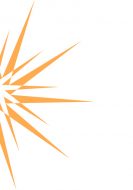
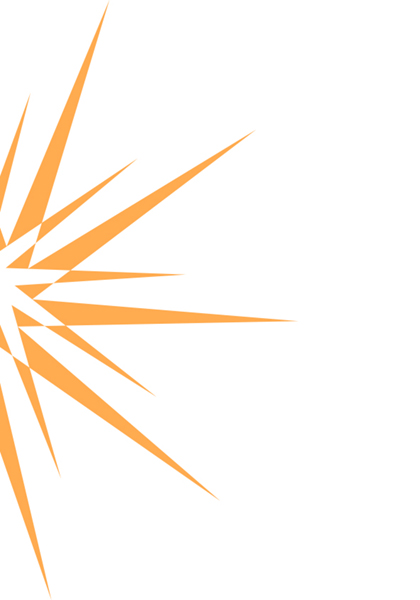 The downside of taking medicine is that it wears off. If you take a pill, its benefit might last for 12 or even 24 hours, and then you have to take another one. The same holds true for acupuncture. Although administered differently – inserting very thin needles through your skin at strategic points – its effects tend to fade just as quickly. There’s one big difference: Most people who get acupuncture only have it once or twice a week, at most. As CIM Director and Vice Dean David B. Hellmann, M.D., explains: “Imagine if you had an antibiotic that worked, and you only took it once a week.”
The downside of taking medicine is that it wears off. If you take a pill, its benefit might last for 12 or even 24 hours, and then you have to take another one. The same holds true for acupuncture. Although administered differently – inserting very thin needles through your skin at strategic points – its effects tend to fade just as quickly. There’s one big difference: Most people who get acupuncture only have it once or twice a week, at most. As CIM Director and Vice Dean David B. Hellmann, M.D., explains: “Imagine if you had an antibiotic that worked, and you only took it once a week.”
Jiande Chen, Ph.D., a scientist working with the Amos Food, Body, and Mind Center, is about to change this.
Chen, Professor of Medicine and Biomedical Engineering, specializes in the pathophysiology of gastrointestinal motility, as well as diabetes and obesity. He is particularly interested in electrical therapies that stimulate the nerves involved in gut function. Jiande has developed a novel device for patients to use at home that provides “transcutaneous electrical stimulation” similar to the effect of acupuncture.
“Imagine if you had an antibiotic that worked, and you only took it once a week.”
In other words, he’s developed a smart watch for acupuncture. Requiring only a watch battery, it delivers a painless, noninvasive dose of electric current that penetrates as deeply and precisely as does one of those long, thin needles. But patients can administer it themselves, at home, after every meal. It’s safe, DIY home acupuncture, and it might significantly change the way people with certain conditions – starting with gastroparesis – find relief.
In gastroparesis, the stomach is reluctant to empty. Food lingers because the muscles that should move it along to the gut – squeezing it like toothpaste through a tube – are either damaged or weak. One big cause is diabetes. The condition can be miserable and can include decreased appetite, heartburn, nausea, vomiting, bloating, anxiety, and discomfort. Symptoms are usually treated with medicine and dietary changes, but in a recent study, Hopkins scientists showed that acupuncture can also help relieve symptoms.
Now, let’s switch for a moment and look at gastroparesis as an acupuncturist would. In traditional Chinese medicine, a complex system of healing more than 5,000 years old, practitioners believe our vital energy, called “qi” (pronounced “chee”), flows through the body along 12 pathways, called meridians. Each meridian involves a different organ system. When all is well, the qi flows smoothly; but when there is an imbalance somewhere, the flow is blocked or hindered, and that’s how disease can begin. The needles inserted during acupuncture are designed to restore this balance. Gastroparesis might be called “food stagnation,” or “liver and spleen disharmony” in Chinese medicine, but the basic problem would be the same: food not moving through the digestive tract. The liver is supposed to ensure that everything – digestion as well as emotions – flows smoothly. When this flow is blocked, it weakens the spleen, which is in charge of digestion.
It’s safe, DIY home acupuncture.
Acupuncture stimulates nerves – in this case, the vagus nerve, which reaches all the way from the brain down through the esophagus, heart, and lungs, down to the abdomen, and controls many things, including digestion. It also stimulates blood flow by dilating blood vessels, and causes the body to release endorphins, natural painkillers. In someone with gastroparesis, acupuncture sends a signal to the brain via the vagus nerve, telling the stomach to work better.
Chen’s device works by neuromodulation, using electrical stimulation to change how nerve cells interact. In painstaking research, he has determined the precise levels needed to produce a beneficial change in the function of the nerves – how much energy to release, the speed of the electrical signal, the width of the pulse. That precision “is one difference between our method and traditional Chinese medicine.” Another is frequency: “When people go to see an acupuncturist, they can go maybe two or three times a week, and the effect of the treatment doesn’t last for more than 24 hours. It would be very expensive to do traditional acupuncture two or three times a day, but with this device, you are just putting an electrode at the acupuncture points. You could do it two or even three times a day, after every meal.” There are two key placement points: One is the wrist, “which is very good for treating symptoms like nausea, vomiting, and motion sickness. That wrist acupuncture point is very close to the medial nerve.” The other is about 5 centimeters below the knee, a place called “stomach point number 36” in acupuncture. “This is very close to the perineal nerve,” and stimulation here “is known to enhance the autonomic nerve function, which helps empty the stomach and improves the digestive process.”
“When people go to see an acupuncturist, they can go maybe two or three times a week, and the effect of the treatment doesn’t last for more than 24 hours.”
Basically, Chen explains, “We combined modern neuromodulation theory with traditional Chinese acupuncture.” This is just the kind of project its leaders envisioned when the Amos Food, Body, and Mind Center began a year ago: blending Eastern medicine with state-of-the-art technology in a holistic, whole-body approach to improving health.
The device has not yet received FDA approval and it doesn’t work for everyone, Chen notes, “but our results of early studies are very exciting.” In related work, Chen plans to see whether the device can help improve symptoms in patients with scleroderma, and whether it can help reduce the appetite in people with obesity. One day, scientists at the Amos Center hope, the device’s uses may be expanded even further to help people manage food intolerance.
Don Willett May 10th, 2016
Posted In:
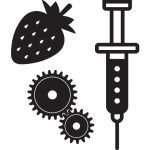
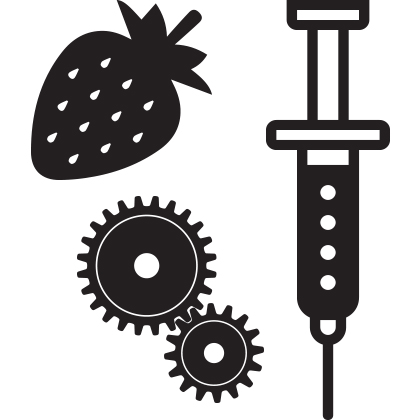 Quality of life is the key: our goal shouldn’t be just to live to a ripe old age. No one wants to be old and decrepit (or decrepit at any age, frankly). But old and healthy – now that’s an exciting goal.
Quality of life is the key: our goal shouldn’t be just to live to a ripe old age. No one wants to be old and decrepit (or decrepit at any age, frankly). But old and healthy – now that’s an exciting goal.
Jeremy Walston, M.D., the Raymond and Anna Lublin Professor of Geriatric Medicine, has spent his career studying how we age. In addition to many studies on specific aspects of aging, he has looked at what healthy older people have in common – at what they eat and don’t eat, and how they live – and has come up with some practical tips.
The secrets of healthy aging, he has found, aren’t so secret after all. The best “fountain of youth” we have right now are some common-sense building blocks that can help everyone, at every age, live better.
If you do it right, just about everything you eat can help your body. This doesn’t mean you have to have an ascetic diet of nuts and berries, or be a food martyr who never eats birthday cake, macaroni and cheese, or a BLT with chips and a pickle. But comfort foods and flat-out junk should be the exception, not the rule, and you should make most of your dietary choices good ones.
Now, what does this mean?
“Fresh fruits and vegetables are very important,” says Walston, “particularly ones that are rich in potassium.” High-potassium fruits and veggies – including bananas, oranges, strawberries; dried fruits, like raisins, apricots, and prunes; spinach, tomatoes, avocados, beans and peas, and potatoes – are the best way for you to get potassium. Potassium is also found in dairy products, in whole grains, meat, and fish.
Exercise is important – not just cardio, but exercises that help with flexibility, balance, gait, and strength. And if you have an orthopedic issue, like knee or hip trouble, address it.
Here’s some of what potassium-rich foods can do for you: Blood pressure: When you get your blood pressure tested, you’re told it’s one number over another one. That number on the top is systolic blood pressure, and potassium can lower it by several points. Heart: Potassium helps your heart beat, which happens about 100,000 times a day. It can help regulate the heart rhythm, too. Cholesterol: Potassium, by itself, is not a designated cholesterol-lowering agent; however, if you are eating foods rich in potassium, this means you’re not loading up on saturated fat. Just eating this good food instead of junk can lower your cholesterol.
Fresh fruits and vegetables are also are anti-inflammatory. This is very important, because inflammation has been linked to many diseases, including several forms of cancer. When you eat these healthy foods, don’t blow it, Walston adds: “Don’t add salt and don’t overcook them.”
Protein is increasingly important; we need it more now than we did when we were younger. “Protein helps muscles function better, and it is also important to help maintain muscle mass.” True, you can get protein from a cheesesteak sandwich, but it’s better to “choose high-quality protein that is low in fat,” says Walston. Salmon, for example, is a great source of protein; so are chicken, lean beef and pork, eggs, beans, soy, and low-fat dairy products like yogurt. “We need about 30 grams of protein at a sitting to stimulate muscle growth optimally,” and the best time to take in protein is after exercise; this helps the muscles recover and grow. “You can also get it from a protein shake or energy bar.”
Vitamin D helps keep your bones strong. It also helps keep your muscles, heart, brain and immune system healthy, and can help prevent cancer. Having low levels of Vitamin D is bad: A study published in the Archives of Internal Medicine found that people with the lowest levels of Vitamin D had more then twice the risk of dying from heart disease and other causes, compared to those with the highest levels. The researchers listed “decreased outdoor activity” as one reason that people can become deficient in Vitamin D. You can get it in milk, oily fish, mushrooms, eggs, and meat. You can also take a supplement. The National Institutes of Health recommends 600 IU (international units) of Vitamin D a day if you’re under 70, and 800 IU a day if you’re over 70.
And get some sun: “Your body needs direct sunlight exposure to activate the Vitamin D.” A pretty amazing reaction happens when the sun hits your skin: the UV-B rays activates Vitamin D into a form that your body can use best. You don’t need to bask in the sun for hours; just a few minutes – 20 or so – a couple of times a week is plenty of time to gain this benefit.
Lower your risk of getting the flu, or pneumonia, or shingles by getting a shot. Many pharmacies, grocery stores, and big-box stores like Walmart and Target offer these shots at a low cost. Take them up on it. The risks of getting one of these illnesses far outweigh the inconvenience and minor expense of a vaccine.
“Talk to your doctor about taking part in a clinical trial,” says Walston. “There are several that aim to preserve muscle function and cognition as people get older.” In addition to benefitting personally from such a study, “you would be helping other older adults learn how best to extend their health, function, and cognition, and maintain their independence.”
“Stay active as long as possible,” says Walston. “Don’t sit for long periods of time, especially in the late afternoon or evening. Studies show that those are low-activity times for many people, so it’s good to try to boost your activity during those times.” Go for a walk after dinner. Walking is good; in fact, you should walk a lot, or do some aerobic activity – there’s plenty to choose from. Just a few examples include taking a Zumba or Jazzercise class, riding a bike, swimming or doing water aerobics, hiking, jogging, or dancing. In addition to getting cardiovascular exercise, “it’s also important to do exercises that help you stay flexible, that help your balance and gait, and that help strengthen your muscles. Don’t forget your shoulders,” which are important for maintaining core body strength and higher levels of function. And if you have an “orthopedic issue,” like knee or hip trouble, address it. “It is essential to maintain your mobility as long as possible.”
However, while you’re staying active:
The body literally takes a hit when you fall. Many older people, who otherwise have been doing pretty well, take a turn for the worse after a fall. Just being laid up for a few days, or even longer, can be difficult for the elderly because they tend to lose strength quickly. The best way not to fall is to be aware of the risk, and do your best to prevent it, says Walston. “Things that can make you fall include not watching your medication; vision problems; weakness in the lower extremities; and balance and gait problems.”
Talking to people – volunteering, interacting with others in church, clubs, or other groups, being around family or friends – is good medicine.
One huge risk factor is easy to fix: “low lighting and a cluttered living area.” Make sure your rooms are well lit – that you not only have enough lamps or ceiling lights, but that the bulbs are high-powered enough so you can see where you’re going. And go after the clutter. It doesn’t take much – maybe a stack of books or magazines that slips over, or a puzzle left by a grandchild on the floor – to make a walkway treacherous. Sometimes, you’re so used to looking at clutter that you don’t see it. This is why Walston recommends bringing in an independent party – a friend or relative who is not used to your home, who can see potential trouble spots you haven’t noticed.
You can lower the odds of falling, as well, by working on your balance. Tai Chi is a great way to do this, and many community centers offer classes (another bonus: taking a class helps you stay connected – see below). Weights and exercises can also help your legs get stronger.
“Cognitive risk factors include diabetes, elevated lipids, and high blood pressure,” says Walston. Medications can keep all of these problems in check. Even if you are currently being treated for these, it’s good to go the doctor for “tune-ups” every so often, to make sure you’re still on the right dosage.
But other things can affect how well you’re thinking and functioning, too, and they may not be what you’d expect:
Poor hearing: If you don’t feel connected, you may tend to withdraw from the conversation, smiling politely, not engaging, because you don’t know what people are saying. This is bad. “Get a hearing aid if you need one.” It won’t just help your hearing; it will help your brain.
Physical inactivity: Being active affects every part of your body. It helps your heart work better, helps your lungs get more air, strengthens your muscles, and helps your brain work better. Many studies have shown that older adults who are active are less likely to get dementia and Alzheimer’s.
Depression: If you are depressed, you are going to be withdrawn, you may not eat or sleep very well, and you may not get enough exercise. All of these can affect your cognitive skills.
Addressing all of these risk factors is good “cognitive protection,” says Walston. And one of the most important ways to protect your brain is to stay active is to “interact with others more frequently.” Stay connected. Talking to people – volunteering, interacting with others in church, clubs, or other groups, being around family or friends – is good medicine. “Engaging in outside activities improves both physical and mental health in older adults.”
Don Willett May 10th, 2016
Posted In:
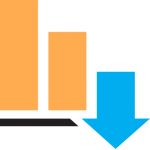
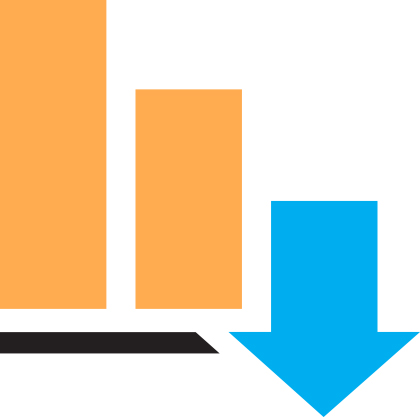
“Why do we do it this way?”
“Because it’s always been done that way.”
“Why is that?”
“I don’t know, just to be on the safe side, I guess.”
It’s good to ask why. It’s good to question whether what you’re doing makes sense. But in medicine, says David B. Hellmann, M.D., we don’t ask those simple questions nearly often enough. “We spend $3.2 trillion on health care in the U.S., and one-third of that is estimated to be wasteful, from overtesting or overtreatment,” he states.
In 2009, here at Johns Hopkins Bayview we began a program called Physicians for Responsible Ordering. The kick in the pants to start it came from our residents, especially Marc Larochelle, M.D., with guidance from cardiologist Jeff Trost, M.D., Colleen Christmas, M.D., and others. Resident Linda Mobula, M.D., and cardiologist Roy Ziegelstein, M.D., the Miller Scholar, now Vice Dean for Education at the School of Medicine, were presenting a case at a Morning Report. The patient was a man who had to go through three different studies to confirm that he needed to have his gallbladder out. That was probably two studies too many, Ziegelstein says. The residents began asking questions about redundant, unnecessary, or flat-out wasteful practices, and looking for smarter ways to do things. It grew from there.
In 2012, a study led by Larochelle and Trost targeted the practice of using three tests to detect a heart attack when one is generally conclusive. They found that roughly a quarter of patients admitted for chest discomfort – none of whom had a heart attack – had more than three sets of cardiac enzymes drawn. Simply reducing this by 20 percent, they calculated, would reduce charges by $1 million a year. And it has: their results, which were featured in the Wall Street Journal, were so successful that the Johns Hopkins Hospital adopted the practice, and has begun reducing charges by $1.5 million to $2 million a year. Equally important, their intervention resulted in a small but significant increase in the diagnosis of heart attack.
“How do you successfully modify a practice when we’ve been doing it this way for so long?”
Two years ago, Ziegelstein and Julia McMillan, Associate Dean for Graduate Medical Education (now retired) challenged each of the residency programs at Johns Hopkins to identify at least one commonly used diagnostic test or treatment in their discipline that was “wasteful, unnecessary, and potentially even harmful,” says Ziegelstein, “and to identify an intervention to reduce or eliminate it.”
The response was enthusiastic: the residency programs took part in more than 40 initiatives with faculty mentorship. To highlight this work, Ziegelstein invited house staff and faculty to submit abstracts for presentation at Hopkins’ first High-Value Practice Research Symposium in February. More than 50 projects were presented by residents, fellows, medical students, and even premedical students as well as faculty.
Note: The idea here is not to go cheap, not to save money just to save money. That might not be the best thing for the patient, and it wouldn’t improve medical care. Instead, the goal is to choose wisely – an idea the American Board of Internal Medicine (ABIM) Foundation has been promoting since 2012 in a national campaign to cut down on unnecessary tests, treatments, and procedures. Daniel Wolfson, the ABIM’s Executive Vice President and Chief Operating Officer, came to Hopkins to give the keynote address. Ziegelstein and Pam Johnson, M.D., Vice Chair of Education and Director of the Radiology Residency Program, plan to make it a national meeting in 2017. “I was really impressed with how engaged everyone was – the questions, the discourse, what we learned from each other. When we do this next year on the national level, we plan to expand the time for discussion, because there’s so much to be learned from every project.”
Back at that 2009 Morning Report at Bayview, Ziegelstein, who led it, showed the house staff an article written in 1985 that he had saved when he was a student. It was from the New England Journal of Medicine, and it was about routinely taken admission chest X-rays. The article said that unless someone has a respiratory or heart symptom, these scans were “virtually useless,” says Ziegelstein, “but the practice didn’t change. Admission chest X-rays were like a ticket to getting admitted. It was a routine practice then, and still is at many places.”
The thing is, he continues, “that article didn’t do anything to change behavior. Education alone is not sufficient to change the way physicians practice. You would imagine that it should be, but it’s not.” When he became Vice Dean, Ziegelstein wanted to make sure that “all of us as educators teach the next generation the importance of practicing cost-conscious and high-quality care,” he says. “To make sure that we communicate to our trainees that high cost is not always high quality. The general ethos at many academic medical centers, and certainly Johns Hopkins, has been that thoroughness always means lots of tests. That ethos doesn’t make any sense and actually is irresponsible.”
The challenge to residency programs: Find at least one commonly used diagnostic test or treatment in your discipline that is “wasteful, unnecessary, and potentially even harmful, and identify an intervention to reduce or eliminate it.”
Ziegelstein and Johnson were delighted that the residency program directors and their trainees not only identified things to change; they figured out interventions and implemented them. As Ziegelstein describes, “Across the board at the Symposium, that’s what was featured. It wasn’t, ‘Hi, my name is X, I’m the residency program director for this department and here’s a seminar that I gave to my house staff.’ It was, ‘Here are my medical students or residents, and here’s what we did. Here’s what happened, here are the results that we’ve been able to demonstrate.’”
The next steps are several: “We want to work with all of our hospitals and clinical staffs – not just the educators – to get some of these programs that we feel have the highest yield and the best evidence implemented in clinical practice across the institution,” says Johnson. And thinking ahead to next year, “With Dan Wolfson from the ABIM Foundation, we are working to lead Hopkins’ first national research and education symposium on this. Our goal is to engage a national discussion and learn from other institutions, and lead widespread improvements in practice.”
Ziegelstein, who is also the Sarah Miller Coulson and Frank L. Coulson, Jr. Professor of Medicine, adds: “We want to move the needle in terms of health care expenditures in this country, in a way that is intentional and thoughtful. That is, we want to make sure we do it in an evidence-based way, as Johns Hopkins has always done. Not to say to doctors, ‘You can’t, or you shouldn’t order this test or prescribe this treatment,’ but rather, ‘You shouldn’t because we have shown it is unnecessary.”
Why do doctors order unnecessary tests or treatments? Several reasons: “I just couldn’t sleep at night if I didn’t do it, because I want to be thorough,” or “The patient expects me to do it,” or “I might get sued if I didn’t.” Another reason: no connection to how much the hospital or patient will have to pay for it. Says Johnson: “How do you successfully modify a practice when we’ve been doing it this way for so long? Changing that kind of behavior is a process, but we’re doing it. Given the breadth of commitment across our institution that I witnessed at the symposium, and the systematic research-based approach that we are taking, I am confident that we will be successful in helping reduce the cost of high-quality care for our patients.”
Don Willett May 15th, 2016
Posted In: